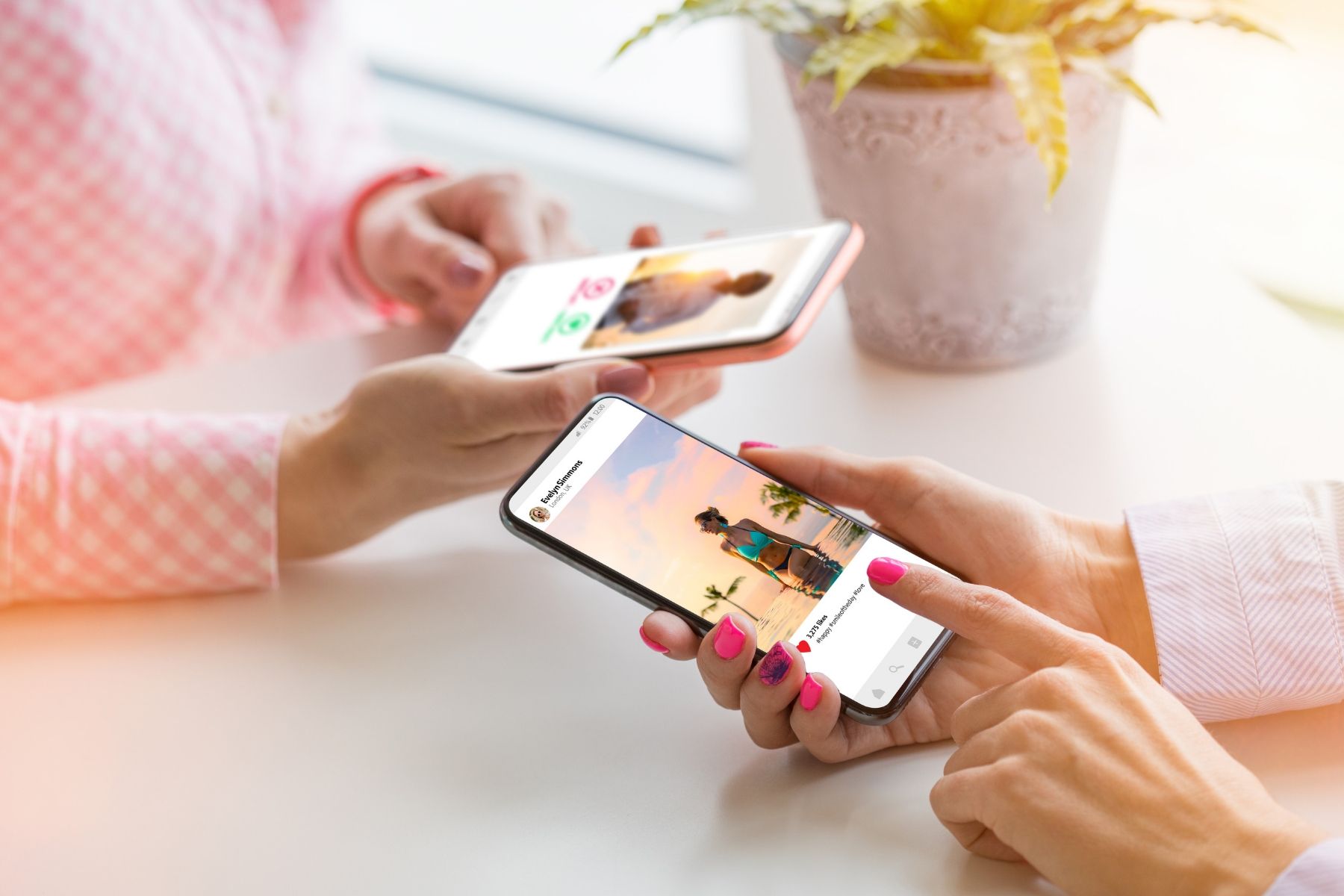
Table of Contents
- The origins of Instagram
- The Facebook Shopping fiasco
- Influencers on Instagram and their virality among followers
- The power of tagging in social network images
- One-click buying on Instagram
The origins of Instagram
While catalogs continue to be the most widespread product tool, there’s no doubt that social media is today their main advertising method. Last year 2.65 billion people worldwide used a social network, and this number will grow to 3.1 billion in 2021, according to Statista’s estimates.
Instagram’s purple icon has become one of the icons most often seen on any smartphone screen, and the speed with which it has reached our pockets is amazing.

The app was developed in San Francisco by Kevin Systrom and Mike Krieger, two entrepreneurs from the world of marketing and programming. The initial idea was called Burbn and looked more like other existing social networks, but it raised a starting investment capital of USD 500,000.
Already in the programming phase, Systrom and Krieger recognized that written communication was amply exploited in other apps such as Facebook and Twitter, and decided to orientate the app towards the visual sense and prioritize image-sharing.
Instagram was launched on 6 October, 2010. Its creators claim it took only 8 weeks to create the app. It took hardly any longer for it to reach fame.
Global data on Instagram usage
To date, Instagram has already exceeded a billion active users worldwide. More than half of the users are under the age of 34, with most between 25 and 34 years old, followed by the 18-24 age range, and virtually the same number of male as female users.
Although the United States is the market with the highest Instagram use among its population, the presence of the app is already global and remains the first network option for image sharing.
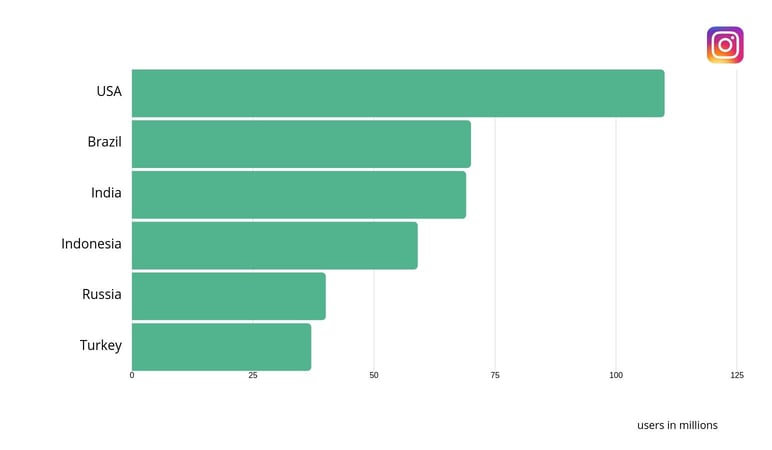
The emergence of Instagram Stories benefited this app when it was faced with the push of Snapchat, a unicorn that soon began to deflate after its launch on the stock market — although it has kept a significant presence among American teenage users. As of 2019, Instagram Stories now has 500 million active users per day, and each year the number increases by up to 25%.
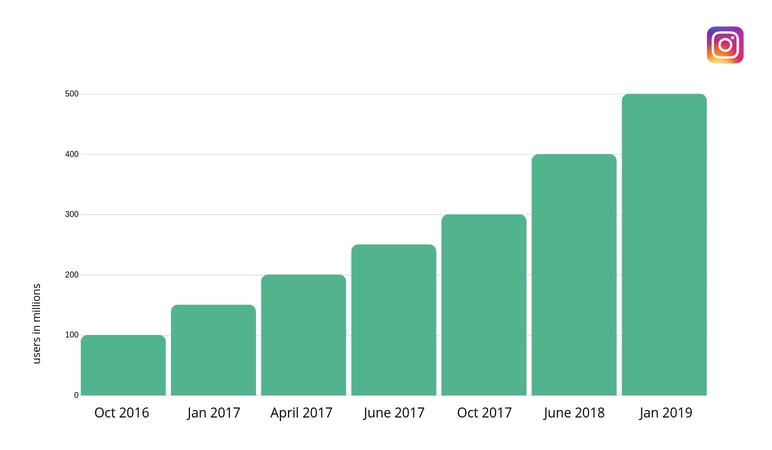
Instagram's success wasn’t to go unnoticed by the competition: it would end up in the hands of Facebook, which bought the social network for USD 1 billion in 2012.
Let's see why it was to their advantage to have this ace up their sleeve.
→ This may interest you: How to choose the best social networks for selling products
The Facebook Shopping fiasco
Facebook continues to be the leader in social media, and it boasts the most users with 2.41 billion active users per month (according to Statista data as of July 2019).
For its part, Instagram ranks sixth as the most widely used social photography network on the planet. But there was another reason for Facebook to buy it.
As Instagram was taking its first steps, Facebook launched Facebook Shopping to introduce this ecommerce experience to the social network. However, Facebook Shopping went into decline from 2012 on, when many merchants and brands such as Gap, J.C. Penney and Nordstrom began closing their stores on the app due to the low rates of return of the network (low sales conversions versus high maintenance costs).

It seemed like the end of 'f-commerce', despite Facebook continuing its attempt with initiatives such as Facebook Gifts (which closed in 2014), chatbots, and Buy Buttons that could store the user's payment data.
Like Twitter, which also unsuccessfully tried to incorporate Buy Buttons, Facebook wasn’t created as an ecommerce extension. Nor was Instagram, but its visual nature made it a better candidate for undergoing a progressive and natural transformation. Facebook had proved useful in advertising promotions, but not in selling.
In recent years the number of advertisers on Instagram has grown, while the rules change without warning; nor is there any clear idea as to what algorithms the network is actually applying. Does it only show posts from accounts which the user 'likes'? Or accounts which have a large following? Despite the unknowns, the community is still there and it continues to grow. FOMO proves stronger than any such doubts.
→ This may interest you: The best marketing tools for social media
Influencers on Instagram and their virality among followers
Both Facebook and Instagram insist they want to clearly distinguish original content from branded content.
However, the reality is that ads on Instagram are camouflaged with non-advertising content, as they follow the same format as any other post and are indistinguishable and thus impossible to hide (ads can however be easily skipped in Stories).
The user can indicate which ads they like and don't like, but they'll always continue to receive ads in their feed.
While it’s so inconvenient for the user, this is a huge advantage for sellers and brands. Positioning and becoming known through Instagram is easy, cheap and fast. Following famous or inspiring people is the main reason for using Instagram, and the most effective tool is the advertising posts that display a product or service to the community.
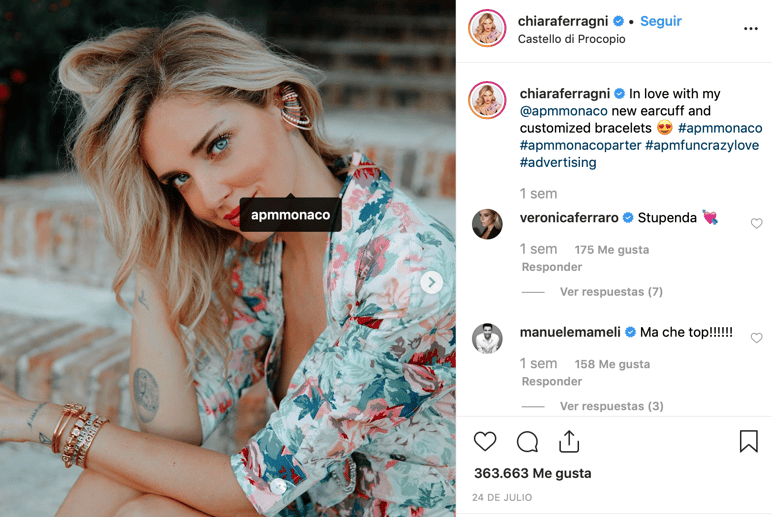
How a brand collaborates with influencers
Collaborating with an influencer can range from free to quite expensive, depending on their popularity and prestige. Not everyone can pay Beyoncé, yet even a minor influencer can have a big influence in a particular niche: it all depends on the type of product and on complying with the rules of the network.
- Use the obligatory hashtags #ad #sponsored and #spon as, both in the text of your post and in Stories tags.
- Influencers must select the 'business partner' option in their settings, both in photos and Stories, which notifies users that the post has been promoted by a brand or advertiser.
- Select the 'Partner' approval option that protects brands, to avoid the well-publicized and growing number of cases of fraudulent posts (by aspiring influencers advertising fake deals on products).
An opportunity like this is huge for brands, through reaching new audiences and receiving the support of an influencer who inspires the community with trust and credibility; as well as for the influencers themselves, by reinforcing their importance through this type of collaboration.
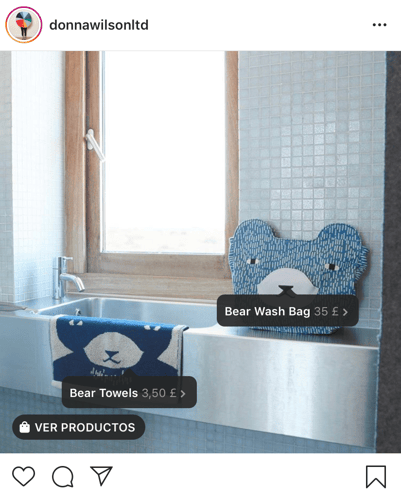
The power of tagging in Instagram images
Advertising your products on Instagram involves more than influencers. The symbol of a shopping bag in photos on this network denotes the possibility of interacting with an entire online store.
This is where the true ecommerce power of Instagram begins, thanks to tagging.
- Better user experience: Finding products is more interactive with product information available at a glance.
- Rich Catalog: Multiple products can be tagged in a single image.
- Omnichannel integration: Instagram attracts traffic to other channels (with the 'View website' option). In any product post it’s enough to display the name, price (or sales price highlighted in blue) and photo: the essentials of a perfect product sheet. You can also draw attention to an Instagram gallery on your website, whether from your feed or from posts where others have tagged you.
- Instant payment: The user can check details, save and buy in a few steps.
- Inspiration: Your product will make more of a visual impact when it’s seen in a 'real' snapshot in which someone is using or wearing it, and following your favorite aesthetic trend rather than along the lines of a usual web catalog.
- Discovery: Hashtags make it easy to find or locate related content and brands will benefit from hundreds of possibilities to appear in search results.
- USG (user-generated content): Posted by other users displaying your products, which both creates community and allows brands to use free content.

One click buying on Instagram
The key to Instagram's success as an ecommerce experience is its framework for creating consistent content and removing barriers to the shopping process.
Ways to buy and sell instantly on Instagram:
- Native shopping: The ability to buy without leaving the app, using shoppable images.
- Native store: In the main business profile you can check a tab for 'Store' next to 'email' or 'phone'.
- Upsell: Each image may appear in relation to 9 other similar posts of the brand so that the user continues discovering... and buying.
- Collection Ad format: Displays a showcase of selected products.
- Dynamic Carousel or video stories: With the option to swipe to 'View more' on a website without leaving the app.
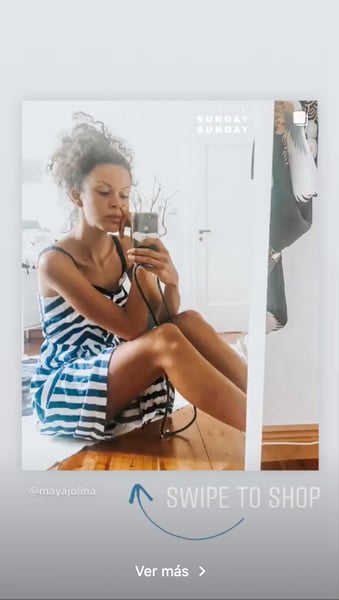
Tips for selling successfully on Instagram
- Defined target: Publications can be aimed at either boosting direct sales or bringing traffic to the website. These options will influence both the type of publication and the KPIs (key performance indicators).
- Defined audience profile: This includes where to find your audience (communities, searches linked to hashtags, groups, influencers, most-followed accounts by niche...).
- Content: This can be ephemeral and closely tied to current trends and events (for young audiences), or inspirational with themes that are more cultural and social, as in Lucy & Yak's Instagram feed.
- High quality photos: Catalog type photos, which clearly show the product in context, model, detail, gifs or videos...
And of course... keep up to date.
Trends on Instagram are constantly changing and it's vital you study the behavior and preferences of your target audience; and that you have automated product information management that allows you to send good quality, up-to-date catalog content to Instagram and any other sales platform.
Are you still unfamiliar with this type of software, yet thinking of selling on Instagram? Try our Sales Layer PIM for free for 30 days and hit 'Like' for the most flexible catalog management system.


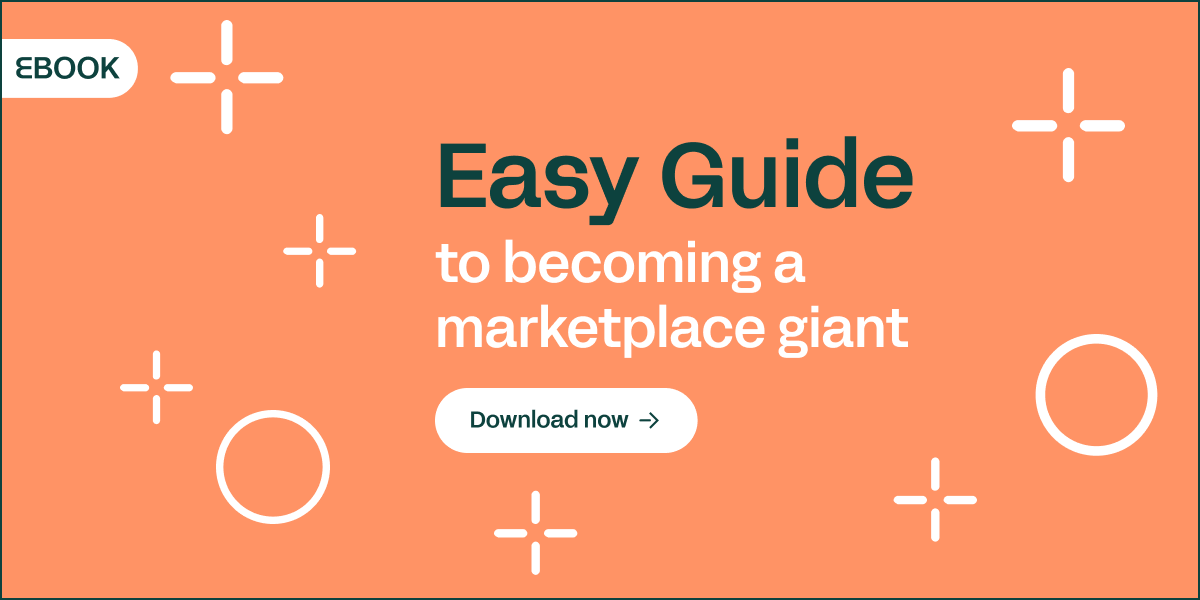
.png?width=520&name=Blog%20Partner%20(3).png)

.png?width=520&name=Blog%20Partner%20(1).png)


